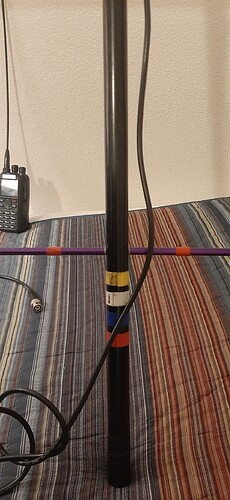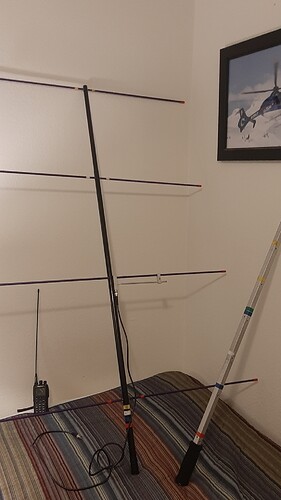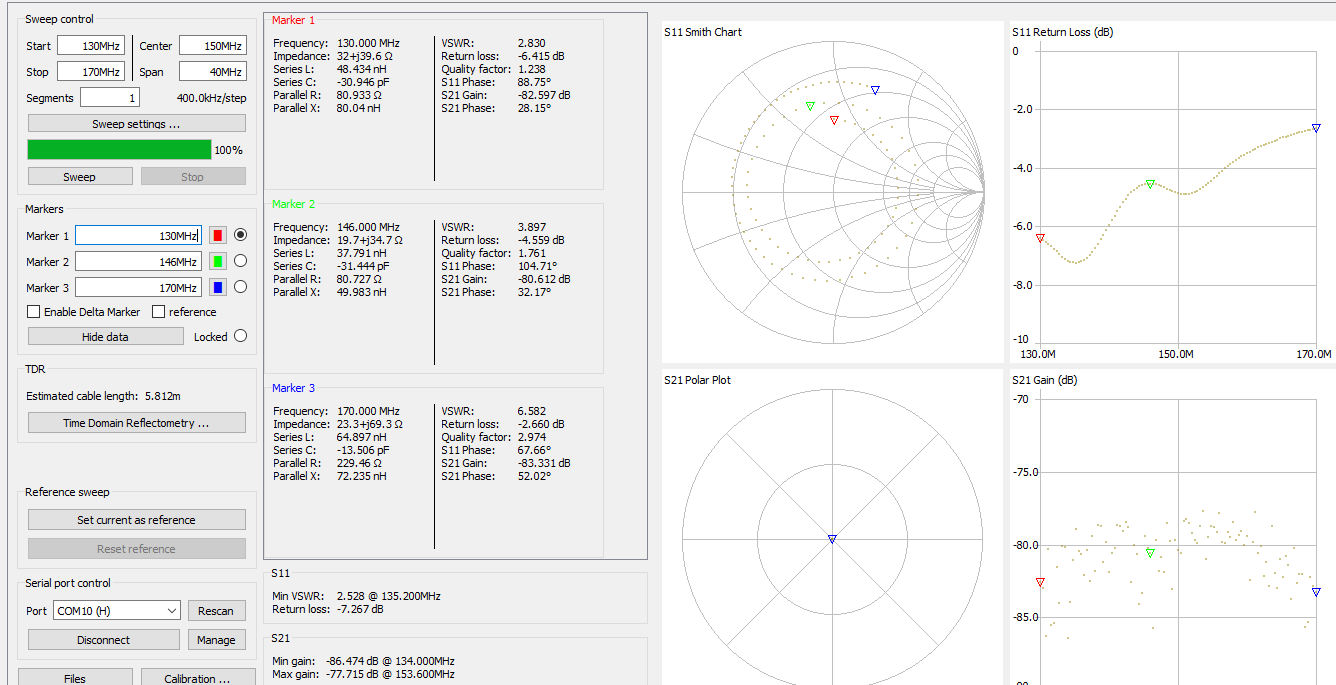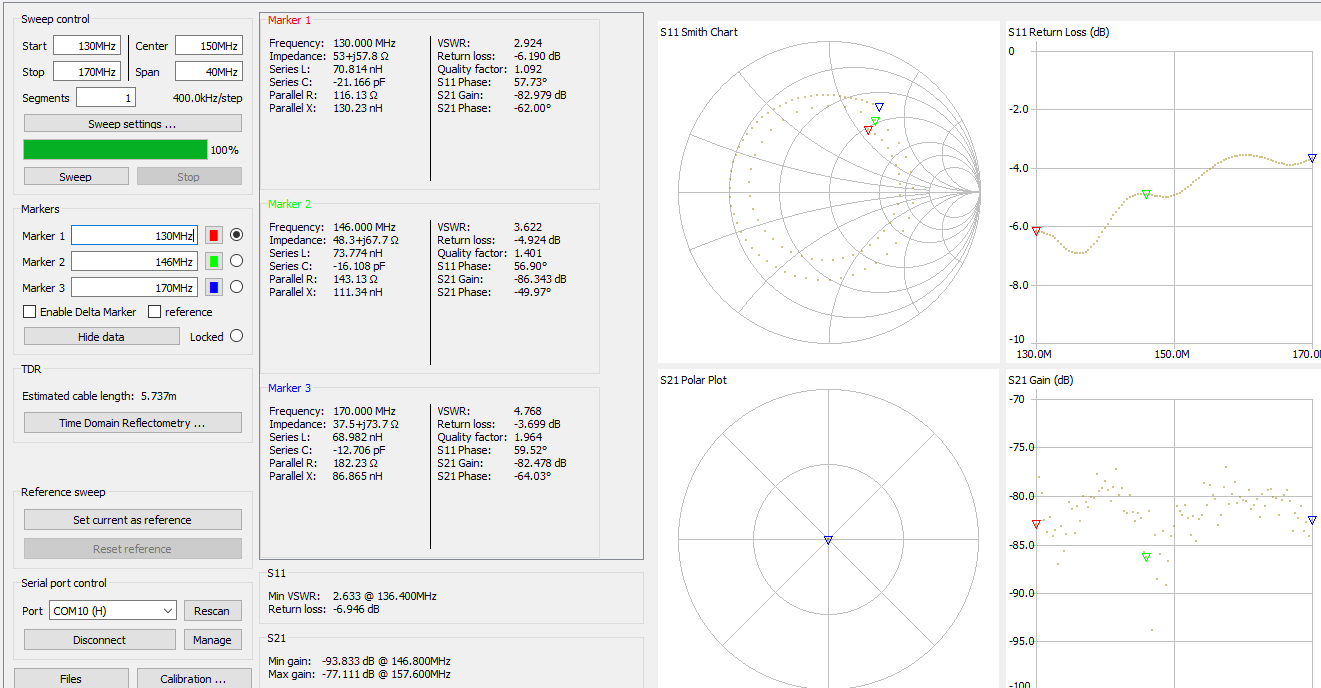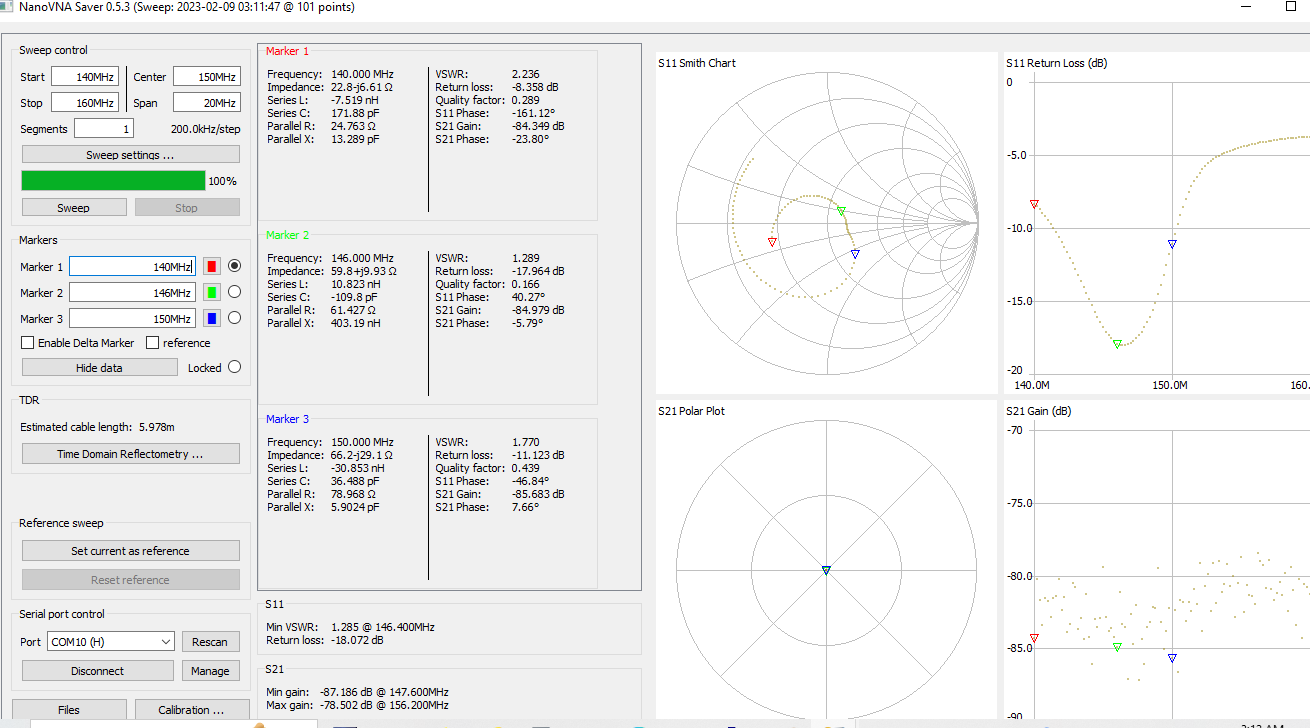After talking to Tim, KG7EGT, about our antennas, I wanted to do some testing. I have an Arrow 3 element yagi, but to save weight I tried replacing the square metal boom with a telescopic fiberglass (fishing pole blank). I added a fourth element (actually, I bought just the four element set from Arrow, so I would have a second Yagi, one for me and one for my wife). It seems to work well, and I haven’t noticed a difference between the stock boom and my fiberglass one. Nor have a noticed much difference between using 3 and 4 elements. Tim said that the antenna might not perform as designed without the metal/conductive boom. I had wondered about this too, and I wondered if my modification was having a negative impact on my signal, but without me knowing it. So today I tried a bit of a test.
First, I checked the SWR with my Nano VNA. Here are the results on 146.5ish, with a 6 foot coax. I calibrated the Nano VNA, but I don’t know how accurate it is, as I was surprised at the SWR reading for the stock product. Moving the coax so it was perpendicular to the boom actually made the reading slightly worse.
Stock 3 element Arrow product 2.5 to 2.9
3 elements on my fiberglass boom 1.7 to 1.9
4 elements on my fiberglass boom 1.2 to 1.4
Then I tried the audio test talk group on the Bawfaw PNW DMR repeater, 146.5
I repeated transmissions x3 in each configuration, plus with a rubber duck antenna on my Anytone 878 radio, on high power. I couldn’t get the repeater with medium or low power.
With the rubber duck, I got an RSSI (dBm) of -116 to -113
With the stock Arrow boom, 3 element, RSSI of -109 to -107
With the fiberglass boom, 3 element, RSSI of -108 to -111
With the fiberglass boom, 4 element, RSSI of -106 to -104
I then tried again, 3 transmissions each, starting with 4 elements, then 3, then 2, then 1 element. (see last picture). I didn’t notice much difference, so perhaps it isn’t a useful test? The screen shot shows 3-4 transmissions per try, as I occasionally was turning some to look at the computer screen and lost connection with the repeater. I think that explains the outlier data points with the higher loss
My location was the Kelso, WA airport.
